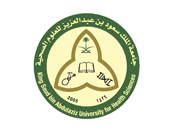Abstract
Purpose: Health profession education and medical education should implement primarily active learning units in the curriculum. Self-study/guided self-study is such a tool that promotes active learning, a method that involves students in their learning process. The implementation of active learning is intended to develop or consolidate practical skills (hands-on). This mixed-method systematic review evaluated the of self-study/guided self-study in the university landscape for health professions education and medical education. Another goal was to foster awareness of the method self-study/guided self-study. Method: A systematic literature search in CINAHL, Embase, ERIC, PubMed and Web of Science was performed. Additionally, a manual search was conducted. This article included qualitative, quantitative, or mixed-method study designs. Included articles were appraised using the JBI Critical Appraisal Tool for qualitative and quantitative research. Abductive thematic analysis was used to synthesize evidence. Random-effects meta-analysis was performed to determine the effects of self-study that develop or consolidate practical skills (hands-on) in health professional or medical students compared to traditional teaching. Results: Fifteen articles were included totaling 3949 students volunteering in the studies. Critical appraisal of the studies ranged from average to good. Seven studies reported the use of individual self-study. The overall weighted effect favored self-study compared to traditional teaching (SDM 0.30, 95%CI: 0.13-0.48, p = 0.003). Discussion: The synthesized findings suggested that self-study/guided self-study was used as individual self-study. Self-study/guided self-study could develop or consolidate practical skill (hands-on) in health professional and medical students. The self-study/guided self-study should be structured in such a way that individual learning, dyad and group learning are possible.
Recommended Citation
Rogan, Slavko; Taeymans, Jan; and Zinzen, Evert
(2023)
"The use of self-study in health professional higher education and medical education - A mixed-method systematic review,"
Health Professions Education: Vol. 9:
Iss.
2, Article 2.
DOI: 10.55890/2452-3011.1037
Available at:
https://hpe.researchcommons.org/journal/vol9/iss2/2



